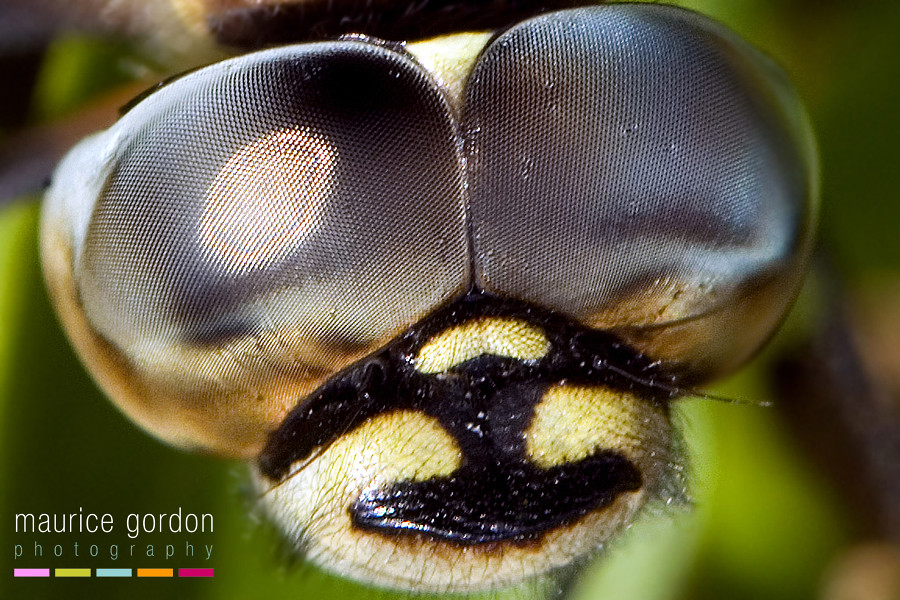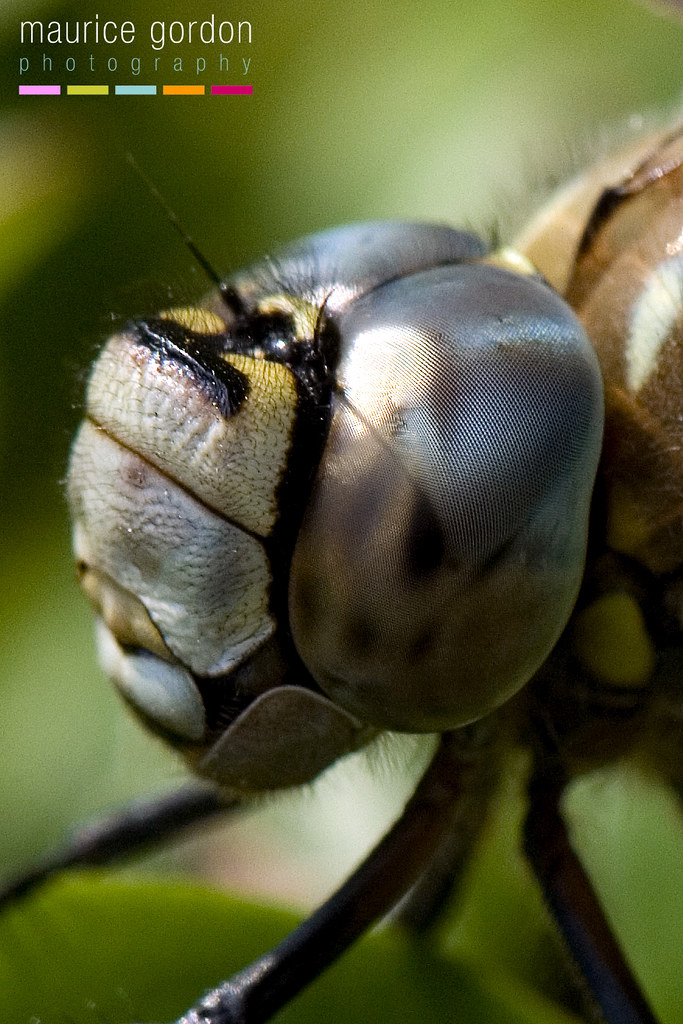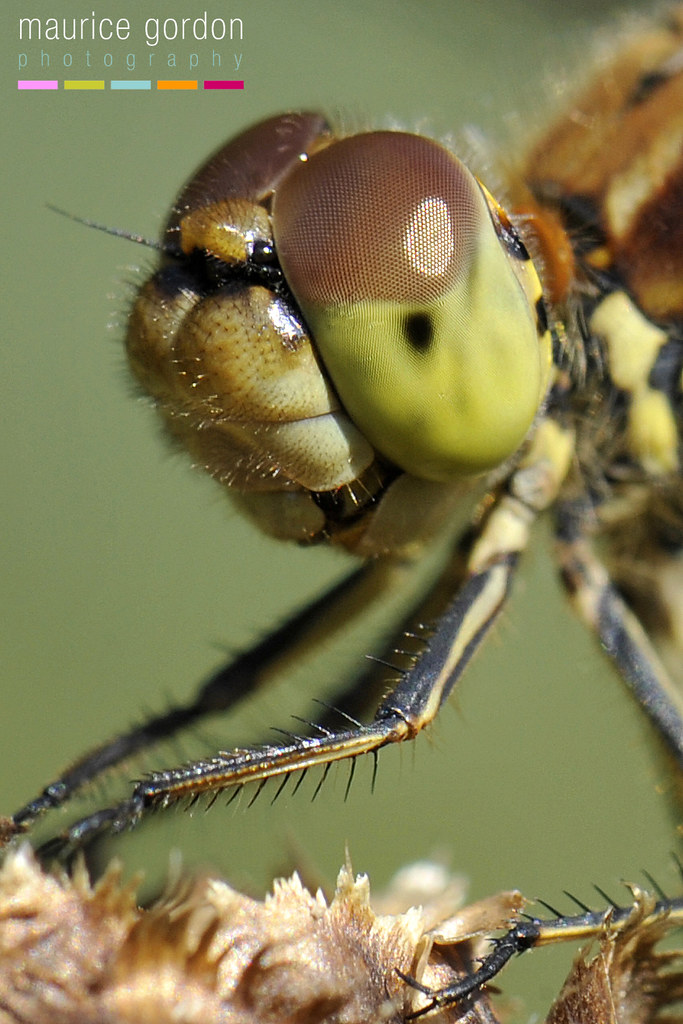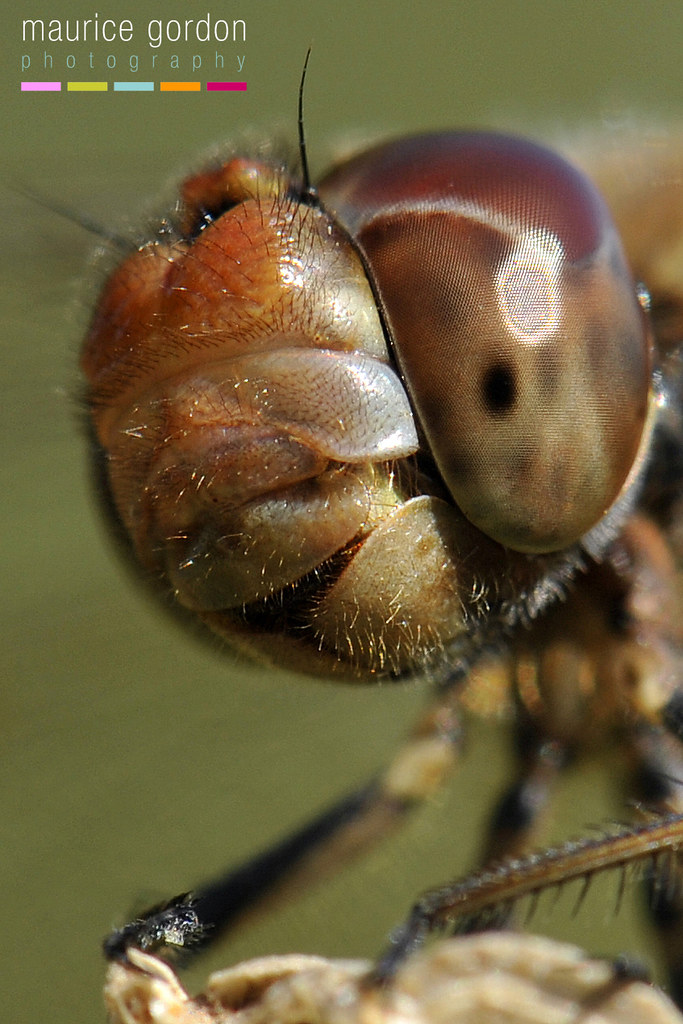
Migrant Hawker - male above and below, showing larger ommatidia at the top of the eye

The eyes of dragonflies are some of the largest in the insect world. The huge compound eyes are made up of the smaller facets known as ommatidia. Each ommatidium has a lens on the surface and a conical lens underneath. There tend to be more ommatidia at the top of the eye looking forward and so dragonflies can usually best detect movement and detail from above them which is why they attack prey from below. However, the eye surrounds the head providing visual input from the front, side and behind all at the same time. The colour change in the eye from top to bottom - as can be seen with the Common Darters below - coincides with the change in the distribution of the ommatidia. The black "pseudopupils" are the most powerfully light sensitive parts of the eye as no light is reflected from them. There are also three simple eyes in a triangle on the top of the head made of one single lens each. The dragonfly builds a mosaic image from all these different inputs. Dragonflies have good colour vision which makes sense of the bright colours on show, but they can also see into the ultraviolet which is helpful in identifying light reflected from water. All clever stuff!

Common Darter - female

Common Darter - male

No comments:
Post a Comment